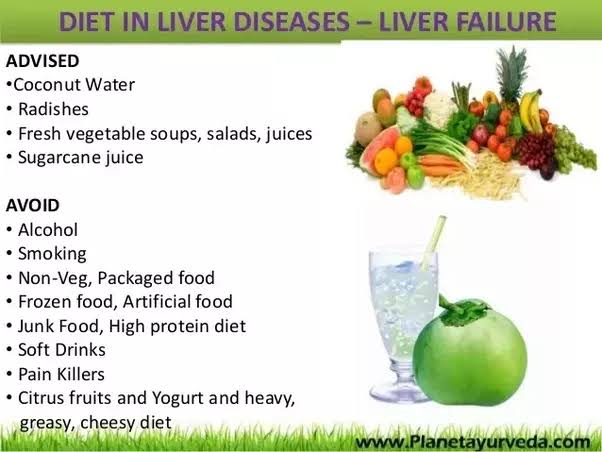Liver cirrhosis-
Liver cirrhosis is a disease of the liver where liver cells becomes severely damaged and replaced with fibrous tissue and leads to scarring of the liver cells.What causes liver cirrhosis-
1. Liver cirrhosis is most commonly caused by alcohal consumption.
2. Chronic viral hepatitis infections ( hep.A and B, E)
3. Biliary cirrhosis and bile duct blockage due to cholesterol accumulation.
4. Drugs including NSAIDS.
5. Auto immune diseases.
6. Bronze diabetes which is indicated by accumulation of Iron in the tissues included liver.
7. Wilson's disease which is genetic disorder characterized by accumulation of copper in the tissues of liver brain and other vital organs.
8. Budd chiari syndrome which is characterized by thrombus formation in hepatic veins.
9. Alpha 1 antitrypsin deficiency which is characterized by the accumulation of abnormal A1 AT in liver tissues.
10. Obesity and fat accumulation in liver tissues.
What are the normal functions of liver and what happened to it when cirrhosis occur-
1. Hepatic portal vein receive deoxygenated blood from the digestive organs. When cirrhosis occur blood can't transfer to liver and cause portal hypertension which leads to main complications called oesophageal varices.
2. Metabolization- it takes excessive amount of glucose and stored as glycogen. And also convert glycogen to glucose. When liver cirrhosis occur it leads to decrease storage of glucose and that free glucose appears in blood cause hepatic diabetes.
* Biproduct of protein breakdown is ammonia liver will take it and covert amonia into urea.
When cirrhosis occur it can't convert it into urea and free Amonia start to accumulate in brain cause severe complication called hepatic encephalopathy also amonic smell in breath.
3. Storage - liver store Vit.B12 , A , C , E , D , k glycogen and Iron. When cirrhosis occur it leads to low vit. D and cause fractures and deficiency of vit. K leads to low coagulation.
4. Digestion - hepatocytes produces bile. That bile help in digestion and stored in gall bladder. There is bilirubin present in bile. Bilirubin in bile produces by the process when kuffer cells of liver remove old RBCs and breakdown of he hemoglobin in heme+globin. Heme is taken by hepatocytes and metabolise heme into ferrous ions and bilirubin. This bilirubin release into bile and secret through stool outside the body. Colour of stool is due to that bilirubin also called stercobilin.
When cirrhosis occur color of stool becomes clay colour stool. This bilirubin get release in blood and stored on skin and skin appear yellow in color.
5. Production of blood plasma proteins-
* Albumin- it is made by liver and maintain oncotic pressure and help to hold water inside the blood. When there is cirrhosis than no albumin lead to spread of water to interstitial space and cause Ascitis which is characterized by swelling of abdomen. There is also swelling of lower legs.
* Fibrinogen and prothrombin-
These protiens helps to clotting abilities and if cirrhosis occur , deficiency of these proteins cause low coagulation and profuse bleeding may occur to patient.
6. Detoxification-
Liver makes drugs less harmful to body and remove toxins. Also make alcohal less toxic.
Also remove hormone secreted by the glands. When cirrhosis occur there is decrease metabolism of estrogen which leads to get accumulate in blood. In male symptoms include gynaecomastia ( increase size of breast) and spider angiomas on chest and Arms.
Complications-
1. Portal hypertension due to narrowing of portal veins and leads to increased pressure. Increase in pressure cause
- Enlarged spleen. Spleen stored WBCs and platelets which get decrease.
- Esophageal varices which is characterized by dilation of vessels of esophagus dur to increased pressure and get rupture.
2. Fluid volume overload due to decrease albumin and cause Ascitis and swelling in lower legs.
3. Jaundice.
4. Renal failure ( hepato renal syndrome)
5. Hepatic encephalopathy due to accumulation of ammonia in brain. Characterized by disturbed mental status.
6. Liver cancer.
7. Bone fractures.
8. Diabetes.
9. Astrexis which is characterized by flapping of hand.
Sign and symptoms-
- Tremors
- Hepatic foetor.
- Yellowish eyes and skin.
- Loss of appetite
- Increased bilirubin and Amonia.
- Esophageal varices.
- Swelling of legs and abdomen.
- Bleeding and increase risk of infections.
- Itchy skin
- Confusion / coma
- Renal failure
- Enlarged breast in men.
- Flapping of hands.
Treatment-
1. Liver transplantation.
2. Shunt surgery.
3. Diuretics , beta blockers , Nitrates and other drugs prescribed according to cause of disease.
4. Blood products and vit.K for clotting.
5. Paracentesis ( removal of fluid from peritoneum layer of stomach)
Care of patient-
1. Monitor for hyper and hypoglycemia.
2. Monitor for PT/INR because patient may have risk for bleeding.
3. Check for esophageal varices and avoid coughing , vomiting , and alcohol intake.
4. Low protein diet if patient have hepatic encephalopathy and if not than provide lean protein diet , low sodium (sodium cause water retention) ,No raw sea food , fluid restrictions ( to prevent more swelling) and oral vitamins.
5. Assessment of skin for breakdown.
6. Do not allow patient to sleep in supine position because it may lead to pressure exerted on on respiratory system and may have breathing difficulty and activity intolerance.
Preventive measures-
- Avoid alcohol.
- Loss weight if patient is fatty.
- Take regular exercise
- Practice good hygiene to reduce chances of infections.
- Take well balanced diet. And take low salt in diet.



No comments:
Post a Comment